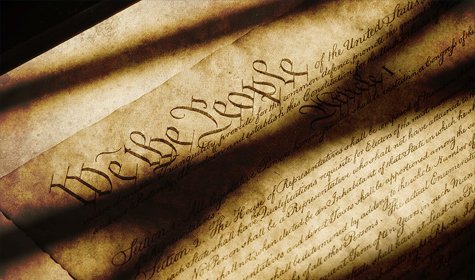Most people in America simply take other people’s word on what the U.S. Constitution really means. This can be a talking head on television, a “scholar’s” book, or even a “Constitutional Lawyer”. But, these people are not necessarily historians, and sometimes it shows. Unlocking the understanding behind the Constitution’s words is obviously of critical importance in constitutional law. (and for those who want to seriously take part in politics) Yet legal writers often make arguments or reach conclusions based on astonishingly few sources. And of the few that they do use, they often misinterpret them. Among these people are even some Supreme Court justices and contributors to our nation’s most prestigious law reviews.
In an effort to raise the quality of originalist research, Rob Natelson, Senior Fellow in Constitutional Jurisprudence wrote an essay (downloadable HERE) to introduce legal writers, scholars and even people who want to completely understand our founding document a complete list of relevant material available. The good news is that most of it is FREE to download off of the internet!
What is Originalist Research?
When lawyers interpret a legal document—whether a contract, statute, or constitution—they generally try to determine the “intent” of those who created the document. “Intent” is a term that has a specialized meaning in a particular field or profession and it can vary somewhat with the kind of document that is trying to be understood. For example, the “intent” behind a contract is how does each party of that contract understand it, but the “intent” behind a will means you only have to worry about the deceased wishes.
Often the text of a document (made clear by rules of construction) will sufficiently point to the “intent” behind it, making further study of it unnecessary. Occasionally, the legal meaning of the words is fixed by existing law. Often, however, the readers must examine the circumstances surrounding the document’s creation to figure out the writers “intent.” When the reader cannot determine the creator’s or creators’ actual state(s) of mind, the reader generally asks how a reasonable person would have interpreted the document in the circumstances, and then applies that as the presumed intent.
Originalist researchers simply do the same things with one particular legal document: the United States Constitution.
In today’s constitutional law environment, most originalists focus on original public meaning. This is partly due to the influence of Justice Antonin Scalia, an original-meaning originalist. But it also is due to law journal articles written during the 1980s that claimed that when Founding-Era lawyers interpreted legal documents they applied exclusively original public meaning and paid no attention to their own understanding.
But, that conclusion was a mistake. Lawyers of the founding generation interpreted most legal documents (with the notable exception of real estate documents) much the same way they are interpreted today: they applied their own understanding of those who gave the document legal force. If the evidence of that understanding is insufficient or too conflicting, then apply the interpretation a reasonable person would have placed on the document. In constitutional terms, this means
(1) seek the ratifiers’ understanding, but if that is not practical
(2) apply the original public meaning.
The evidence for this conclusion is collected in Robert G. Natelson, The Founders’ Hermeneutic: The Real Original Understanding of Original Intent, 69 OHIO ST. L.J. 1239 (2007). Downloadable for FREE HERE.
In practice, original intent, original understanding, and original public meaning usually overlap, and the same evidence often can be used (with an adjustment in weight) to demonstrate any of the three. For example, at the Constitutional Convention John Dickinson said, without contradiction, that the term “ex post facto law” referred only to a retroactive criminal law, and not to a retroactive civil law. His remark is direct proof of original intent. But it also is evidence (in most cases) of what the term “ex post facto law” generally meant at the time and of how the ratifiers understood it.
What Sort of Evidence is Used in Good Originalist Research?
The evidence used in good originalist research includes the text of the Constitution, plus:
I. Contemporaneous encyclopedias and dictionaries.
II. The founding generation’s educational canon;
III. Evidence of the Founders’ understanding of Anglo-American history;
IV. The historical records surrounding adoption of the Constitution.
V. Legal materials used at the time of ratification.
All of these references can be found with FREE downloadable links to the source material by downloading Rob Natelson’s Essay HERE.

